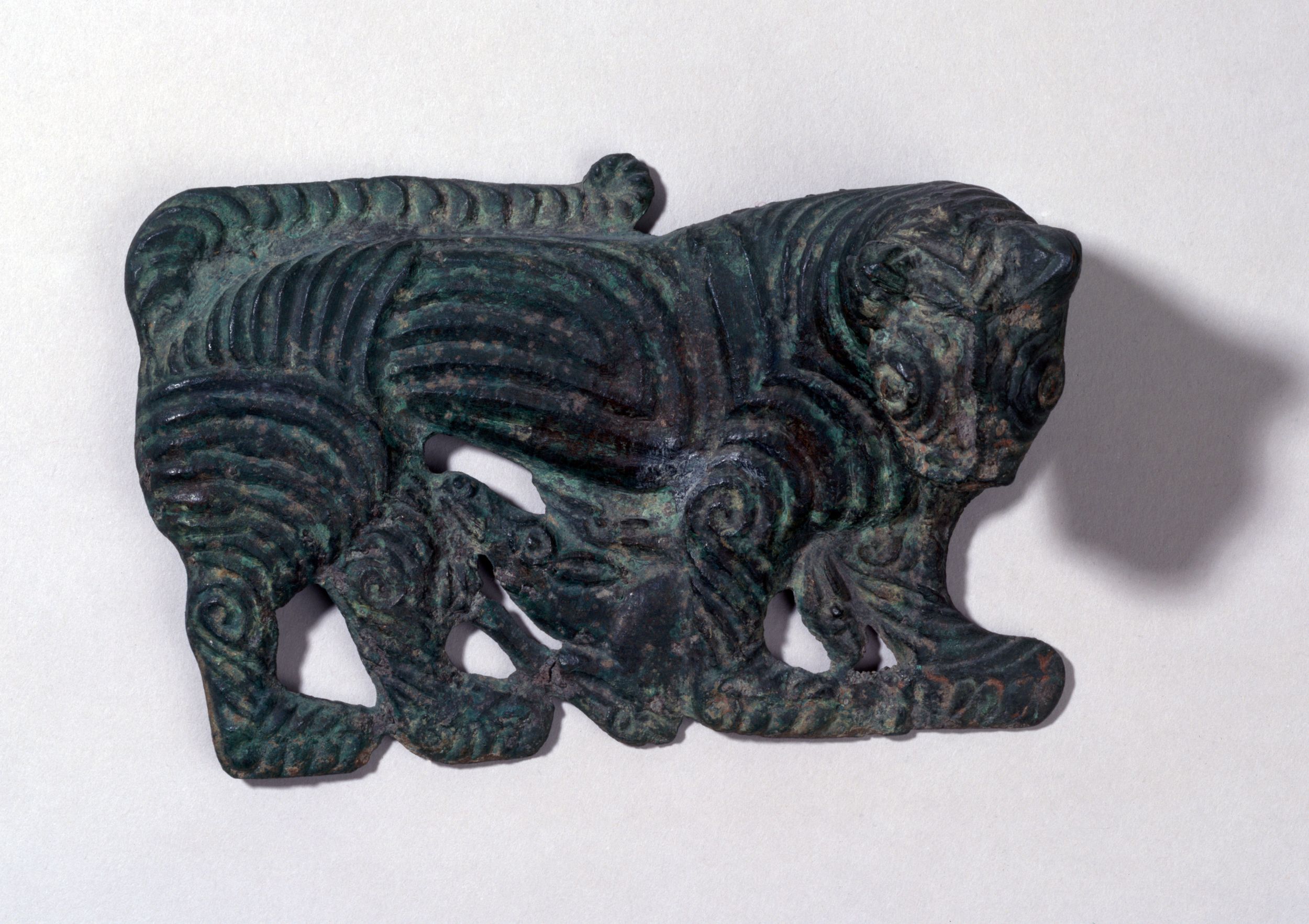
Plaque
Bronze
Bijou - Parure
Achat
M.C. 8323
Circa 2000 BC, the domestication of the horse enabled large-scale nomadism, leading to significant economic progress in the great steppes of central and northern Asia. Blacksmith forges, which had been sedentary for several decades, supplied livestock breeders and warriors with bronze weapons and harness parts of all kinds. The Ordos, established in the northern loop of the Yellow River, and other regions of Inner Mongolia were active production centres that were distinct from the older workshops of southern Mongolia. With tribal migration, many of these motifs would spread across Eurasia and endure into the Christian era. Recent excavations have identified the funerary context of these metal ornaments and their chronology. Their relationship with China is well attested. Precious objects from the central provinces furnish the graves of nomadic chiefs, while the animal art of the steppes influenced Chinese art in the Warring States period (206 BC-220 BC).
The Cernuschi Museum plaquette is similar to pieces in the Musée National des Arts Asiatiques – Guimet (Paris) and the Nelson-Atkins Museum of Art (Kansas City) (Bunker-Chatwin-Farkas, 1970, p. 140, no. 84), among others. Several passed through the hands of the art dealer C.T. Loo in the 1930s. The feline, covered in cord-marked stripes in high relief, is crushing a deer. The same composition adorns the Bashadar sarcophagus, carbon-14 dated to 520 BC (more or less 130 years).
